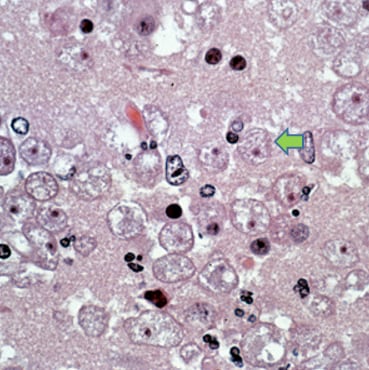Diagnosis & Detection
Clinicians: For 24/7 diagnostic assistance, specimen collection guidance, shipping instructions, and treatment recommendations, please contact the CDC Emergency Operations Center at 770-488-7100.
Balamuthia granulomatous amebic encephalitis (GAE) is a serious infection of the brain caused by Balamuthia. GAE is often diagnosed only after death. However, it can be diagnosed by examining tissue samples from a living patient as well. Diagnosis of GAE in a living patient is less common because the amebas are difficult to identify under the microscope, even with commonly used stains.
However, there are three types of tests that can help confirm the diagnosis of GAE. The indirect immunofluorescence assay (IFA) is a test used to detect antibodies developed against Balamuthia amebas in the serum of infected patients. In contrast, immunohistochemistry (IHC) and indirect immunofluorescence (IIF) staining use specific antibodies against Balamuthia to detect the amebas. Finally, a polymerase chain reaction (PCR) molecular assay can detect Balamuthia DNA, especially in brain tissues .
CDC offers diagnostic assistance for Balamuthia to physicians and scientists through DPDx and the Free-living and Intestinal Amebas (FLIA) laboratory. Morphology experts at DPDx can evaluate microscopic images, while the scientists at the FLIA laboratory provide diagnostic assistance using molecular and immunofluorescence assays.

Several trophozoites of B. mandrillaris in brain tissue, stained with hematoxylin and eosin (H&E). One representative trophozoite of B. madrillaris is shown by a green arrow.